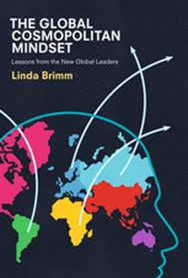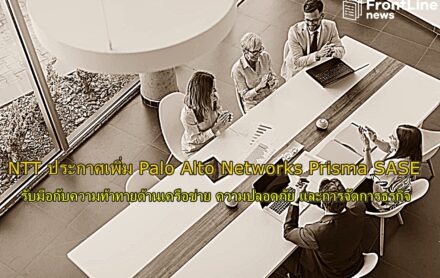INSEAD professor’s new book explains the unique competencies and complex issues facing multi-national, multi-cultural “citizens of the world”
Fontainebleau (France), Singapore, Abu Dhabi, 4 September 2018: “A global mindset is essential in international business and in solving complex problems,” says Linda Brimm. A rapidly increasing number of people have multiple passports or live outside their country of citizenship. By accident, by design or necessity, people are moving across the world in greater numbers, despite the backlash against “citizens of the world”. Given their life and work experience across borders, “they have a great deal to teach us about the new ways to address some of the complicated challenges of today” says Linda Brimm, an Emeritus Professor of Organisational Behaviour at INSEAD, in her latest book, “The Global Cosmopolitan Mindset”.
 “Many of them come from humble immigrant backgrounds, growing up in multiple countries, languages and cultures so have had to work very hard to get where they are today. Some are simply from bi-cultural families and have been born into a world of globalisation and change”, adds Brimm. Others have opted for such changes in choice of schools or early employment. The book tells the stories of hundreds of Global Cosmopolitans Brimm has researched throughout her career. While every story is different, Brimm draws them together to find commonalities to understand what makes people successful when they cross borders and what others, especially managers in organisations, can learn from such individuals.
“Many of them come from humble immigrant backgrounds, growing up in multiple countries, languages and cultures so have had to work very hard to get where they are today. Some are simply from bi-cultural families and have been born into a world of globalisation and change”, adds Brimm. Others have opted for such changes in choice of schools or early employment. The book tells the stories of hundreds of Global Cosmopolitans Brimm has researched throughout her career. While every story is different, Brimm draws them together to find commonalities to understand what makes people successful when they cross borders and what others, especially managers in organisations, can learn from such individuals.
The new book is the sequel to her first book “Global Cosmopolitans: The Creative Edge of Difference”, which introduced the famous “7Cs Model of Change and Development” that helps people understand and approach the changes they’re likely to face on a global journey. Her new book delves deeper into the mindset that Global Cosmopolitans develop, the identities they form for themselves and what they have to consider when they want to return home or retire.
Brimm structures the book around three main areas. Part 1 explains how Global Cosmopolitans learn from their global lives to develop a mindset and a skillset they use to help them. Brimm characterises the Global Cosmopolitan Mindset as a combination of learning and growth with a global perspective and creativity. For instance, along their journeys, they face unpredictable situations such as learning new ways of communicating, new ways of relating to people, even the most mundane things such as how to seek medical care in a foreign land. “Those with attitudes of learning and flexibility are able to better learn from their experience and articulate it in constructive ways”, says Brimm.
A Global Cosmopolitan Mindset, Brimm says “is a culmination of a growth mindset, a global mindset and a creative mindset.” Crucially, “their cognitive flexibility also enables Global Cosmopolitans to think locally while remaining global”, adds Brimm, an important skill to have as the world increasingly looks for new solutions to local challenges.
Part 2 looks at how Global Cosmopolitans form their identities throughout their lives. Brimm acknowledges that “Some of the classic ways that individuals present themselves as part of their identity story are as relevant for Global Cosmopolitans as for anyone else. But Global Cosmopolitans add levels of complexity when facing a major challenge…they author and understand who they are, what they can change, and what must remain the same…black and white perspectives are rarely found in a global mindset.”
Brimm suggests that internal monitoring is a necessary skill for Global Cosmopolitans and using the image of a “life mosaic” helps them describe a sense of self that travels over time and through change. This helps them manage differences and gives them an acute sensitivity to local vs global norms in the workplace allowing them to feel at home with people of different backgrounds. She also illustrates the unique dilemmas faced by these individuals as they develop their own sense of identity.
Part 3 explains how Global Cosmopolitans make sense of their journeys as they continue to create new chapters in their life stories. “They write new chapters in their developing lives, which define them as individuals, as well as providing examples of answers to some universal questions, such as how to satisfy the need to belong, what gives a sense of meaning to life, or how to have an impact,” says Brimm. “‘If you are used to questioning your life and your possibilities, reflection and personal growth will continue’, is what Global Cosmopolitans have taught me”, adds Brimm.
While nationalism and a resistance to globalisation are ascendant, Brimm believes that it is becoming increasingly clear that solving issues of trade, immigration and climate change transcend any one country or individual. “The Global Cosmopolitans who have obtained experience in moving skillfully across borders are a major source of energy and expertise to build the coalitions that can address such cross national, cross cultural issues,” she concludes.




